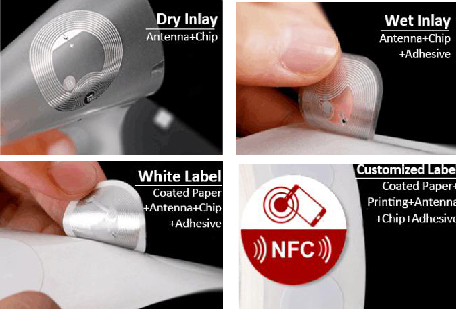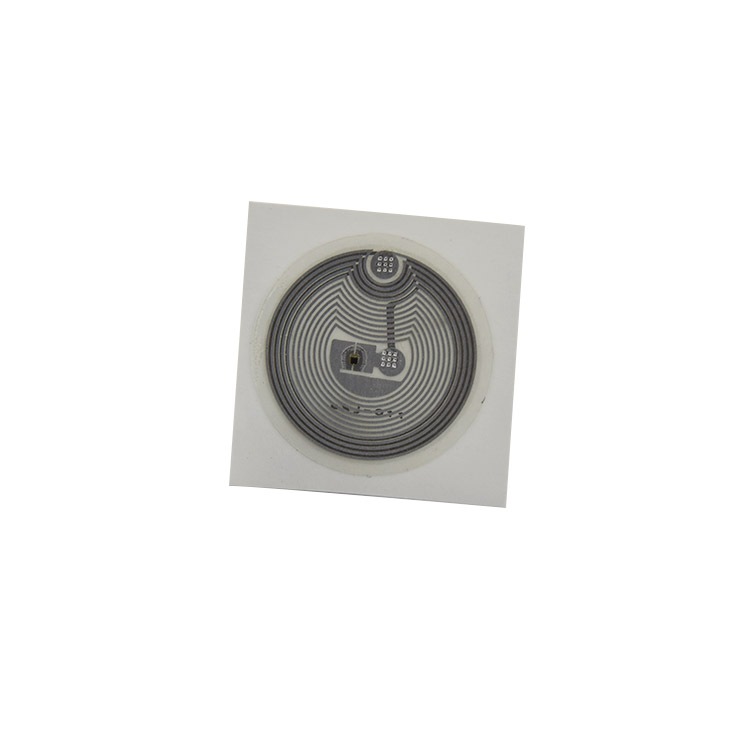Radio Frequency Identification (RFID) technology is transforming industries by enabling efficient and accurate asset tracking. RFID systems operate through a combination of three primary components: RFID tags, inlays, and labels, alongside the essential RFID reader and antenna. While all these components serve the same purpose—tracking and identification—there are key differences in their construction and applications. This guide will help clarify the distinctions between RFID tags, inlays, and labels, while also explaining the roles of each in the broader RFID ecosystem.
RFID technology uses radio waves to identify and track objects. The core of an RFID system involves the RFID tag (or inlay or label), the reader device, and the antenna. These components work together to collect, store, and transmit data wirelessly, without requiring direct line-of-sight between the reader and the tracked object.
RFID systems can be classified into two types based on the power source:
Active RFID Tags: These tags contain their own power source (a battery), allowing them to transmit signals over longer distances (up to 100 meters or more).
Passive RFID Tags: These tags do not have a battery and rely on the energy transmitted by the reader. They typically have a shorter read range but are more cost-effective and commonly used in most applications.
Now, let’s dive deeper into the differences between RFID tags, inlays, and labels.
An RFID tag is a standalone device that integrates an RFID chip and an antenna. It is designed to be attached to or embedded in an object that needs to be tracked. RFID tags can be either active or passive, and they typically come in various sizes and formats, depending on their intended use. The chip in the RFID tag stores relevant data, while the antenna is responsible for transmitting and receiving signals from the RFID reader.
RFID tags are used in a wide variety of industries for tracking and inventory management. They are often employed in retail, logistics, and asset management systems where items need to be identified or tracked over longer distances. For example, active RFID tags might be used for vehicle tracking, while passive tags are common for retail inventory control.

Can be active or passive.
Typically read over long distances.
Can be embedded in or attached to various objects for tracking.
Suitable for applications requiring real-time location tracking.
An RFID inlay is essentially the core component of an RFID tag. It consists only of the RFID chip and antenna, without any additional packaging or surface for printing. Inlays are smaller and more flexible than full RFID tags, making them ideal for integration into other products, such as plastic cards, labels, or packaging.
Unlike RFID tags, which are designed to be used on their own, RFID inlays are typically embedded into other materials. For example, an RFID inlay might be integrated into a label, which is then applied to a product. RFID inlays are available in both passive and active types, although passive inlays are more commonly used due to their cost-effectiveness.
Smaller and more compact than RFID tags.
Contain only the chip and antenna.
Often embedded into other materials, such as labels or cards.
Available in passive or active formats.
Suitable for applications where space and cost are limiting factors.
An RFID label is similar to an RFID inlay, but it includes a printable surface. This surface allows businesses to add additional information such as barcodes, text, logos, or product details. RFID labels combine the functionality of RFID technology with traditional labeling, making them ideal for applications where product identification, branding, and tracking are all required in one package.
RFID labels are often used in industries like retail, healthcare, and logistics, where products need to be labeled with both visual information and RFID functionality. These labels can be passive or active, and are typically designed for short to medium-range readings. They can be affixed to a wide variety of surfaces, including cardboard, plastic, and even fabric.
Include a printable surface for branding and identification.
Can be used for short to medium-range tracking.
Used in retail, healthcare, and logistics for both labeling and tracking.
Can be passive or active.
Provides a versatile solution for product identification and tracking.

The decision to use an RFID tag, inlay, or label depends largely on the specific requirements of the application. Here are some factors to consider when choosing the right component for your system:
Application Type: If you need a complete tracking solution with standalone capabilities, an RFID tag might be the best choice. For applications where the tag needs to be embedded into other materials, an RFID inlay is more suitable. If you need to combine identification with branding, an RFID label would be the ideal choice.
Read Range: RFID tags generally offer the longest read range, especially in the case of active tags. RFID inlays and labels typically have a shorter range, but their compact size and flexibility can be an advantage in certain applications.
Durability and Environmental Conditions: RFID tags and labels come in various materials that can withstand different environmental conditions. For example, certain RFID labels are designed for high-temperature environments, while RFID tags can be manufactured with rugged materials for harsh conditions.
Cost: RFID inlays tend to be the most cost-effective option, as they are smaller and do not require additional printed surfaces. RFID labels are generally more expensive due to the printing process involved.
In summary, while RFID tags, inlays, and labels all serve the same basic function of identifying and tracking objects via radio frequency, they differ in their construction and application. RFID tags are standalone devices designed for longer-range tracking, while RFID inlays are compact, embedded components used within other materials. RFID labels, on the other hand, combine the tracking capabilities of RFID with printed information, making them ideal for labeling and branding in various industries.
Understanding these differences will help businesses select the right RFID component for their specific needs, whether it’s for inventory management, logistics, or asset tracking. By leveraging the right technology, companies can enhance operational efficiency and improve asset visibility across their supply chains.
Do you need a professional team to provide you with solutions? Contact us for a quote
Let us discuss it with you.